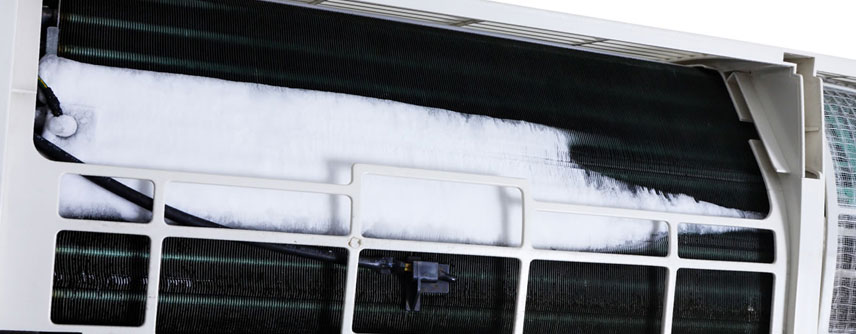During hot summer days, your air conditioner can be a real lifesaver, giving you much-needed relief from the heat. However, like any complicated machine, air conditioners can have problems that make you feel uncomfortable. The good news is that many common air conditioning issues can be figured out and sometimes fixed without needing to call in a professional technician. In this detailed guide, we’ll go over some of the most common air conditioning problems and give you tips on how to solve them to help you stay cool and comfortable. Let us have a look at common Air Conditioning Problems, their possible causes and troubleshooting steps:
Poor Cooling Performance
Possible Causes:
- Clogged or dirty air filters
- Blocked or restricted airflow
- Refrigerant leaks
- Malfunctioning thermostat
- Compressor issues
Troubleshooting Steps:
- Check and replace dirty or clogged air filters regularly.
- Ensure that vents and registers are unobstructed.
- Clean the condenser coils and evaporator coils if they are dirty.
- Verify that the thermostat is set to the desired temperature.
If the problem persists, it may require professional attention to check for refrigerant leaks or compressor issues
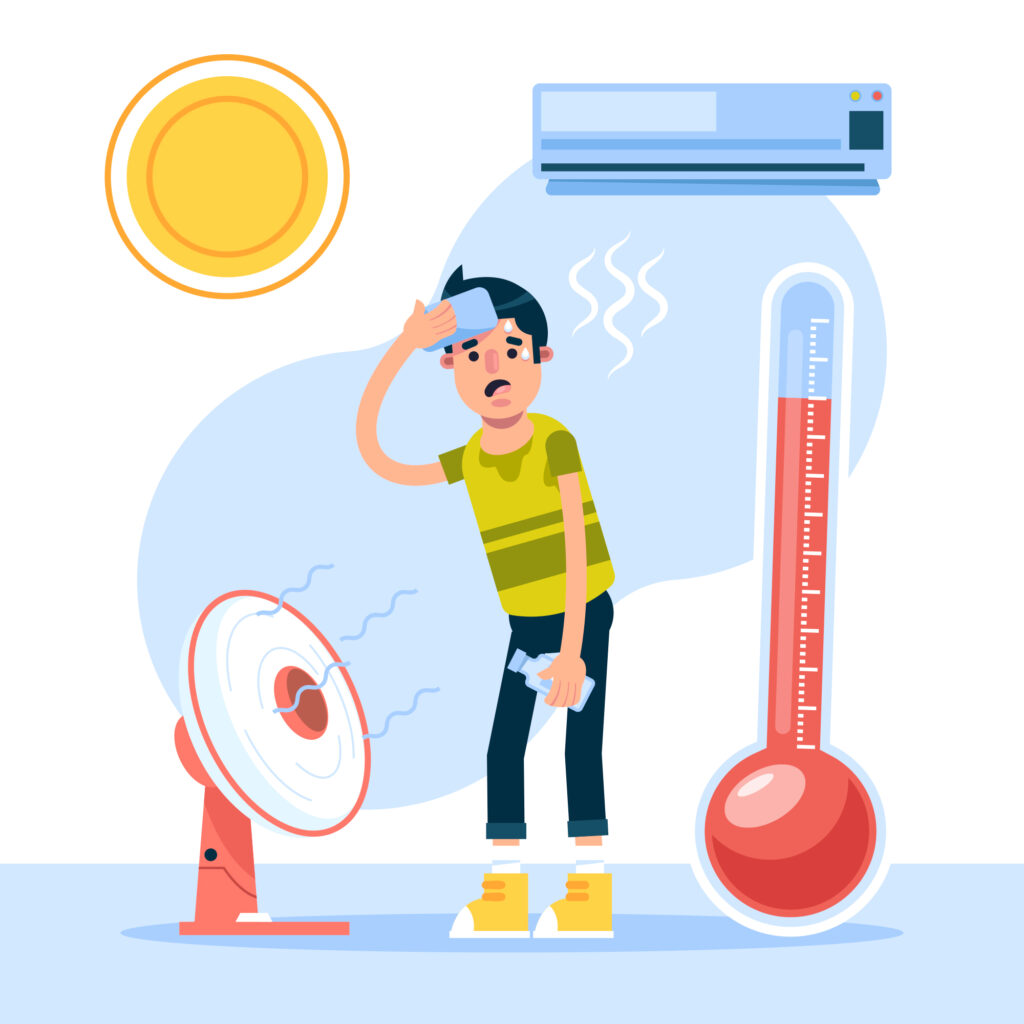
Inadequate Air Flow
Possible Causes:
- Blocked or dirty air filters
- Ductwork issues (leaks or restrictions)
- Damaged blower motor
- Frozen evaporator coils
Troubleshooting Steps:
- Replace or clean air filters.
- Inspect and seal any visible leaks in the ductwork.
- Check for obstructions in the ducts.
If the blower motor is faulty, it may need to be repaired or replaced. Thaw frozen evaporator coils by turning off the AC and running the fan. If the issue persists, consult a professional.

Strange Noises during operation
Possible Causes:
- Loose or damaged parts
- Debris in the condenser unit
- Blower motor or Fan blade issues
- Refrigerant leaks
Troubleshooting Steps:
- Inspect the outdoor condenser unit for debris and clean it if necessary.
- Tighten loose components (screws, bolts, etc.).
- Listen for specific noises, such as hissing (indicating refrigerant leaks) or screeching (indicating a belt issue). In these cases, professional assistance is advised.

Air Conditioner Unit won’t Turn On
Possible Causes:
- Tripped circuit breaker
- Faulty thermostat
- Wiring problems
- Capacitor issues
Troubleshooting Steps:
- Check the circuit breaker and reset it if it has tripped.
- Ensure the thermostat is set to the “cool” mode and the desired temperature.
- Inspect the thermostat wiring for loose or damaged connections.
If the capacitor is suspected to be faulty, consult a professional for testing and replacement.
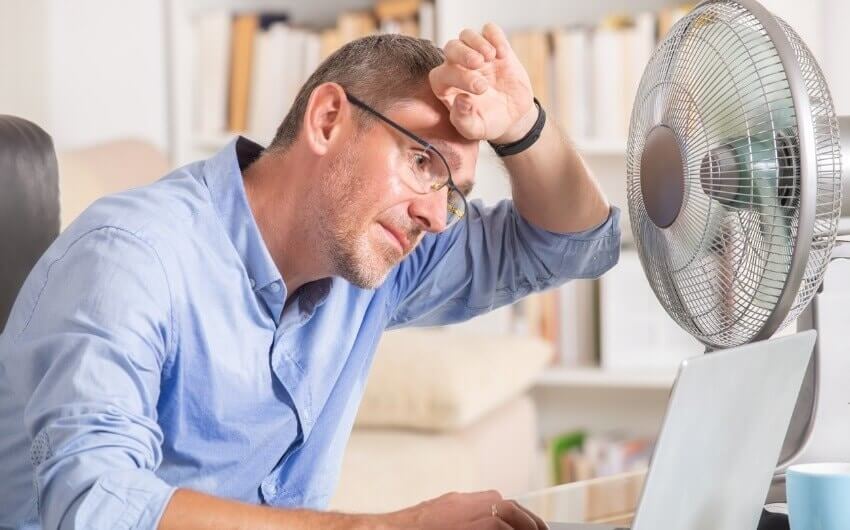
AC Unit Keeps Cycling On and Off (Short Cycling)
Possible Causes:
- Dirty air filters
- Refrigerant issues
- Oversized or undersized AC unit
- Thermostat problems
Troubleshooting Steps:
- Replace or clean air filters.
- Check for refrigerant leaks and have them repaired if found.
- Consult with an HVAC professional to determine if your AC unit is appropriately sized for your space.
- Ensure that the thermostat is functioning correctly and calibrated.

Water Leakage
Possible Causes:
- Clogged condensate drain line
- Frozen evaporator coils
- Improper installation
- Blocked condensate pump (if applicable)
Troubleshooting Steps:
- Inspect the condensate drain line for clogs and clear any obstructions.
- Thaw frozen evaporator coils as mentioned earlier.
- Check if the AC unit was installed correctly and if it’s level.
- If your system has a condensate pump, ensure it’s working correctly and not blocked.
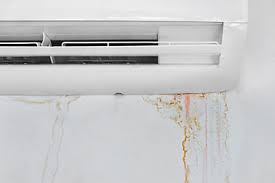
Foul Odors
Possible Causes:
- Mold or mildew growth in the ducts or evaporator coils
- Dirty air filters
- Dead animals or pests in the ductwork
Troubleshooting Steps:
- Clean or replace air filters regularly.
- If you suspect mold or mildew, consider professional duct cleaning and coil cleaning.
- If there is a persistent odor, it’s advisable to have a professional inspect the ductwork.

Uneven Cooling
Possible Causes:
- Blocked vents or registers
- Leaky or poorly insulated ducts
- Improperly sized AC unit
- Damaged thermostat
Troubleshooting Steps:
- Ensure that all vents and registers are open and unblocked.
- Inspect the ductwork for leaks and insulate ducts in unconditioned spaces.
- Consult with a professional to assess if your AC unit is appropriately sized for your home.
- Calibrate or replace the thermostat if it’s found to be faulty.
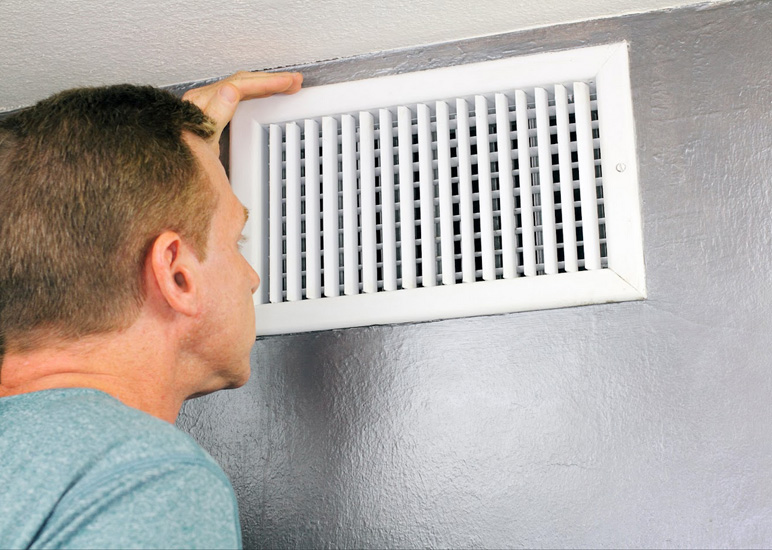
High Energy Bills
Possible Causes:
- Poor insulation
- Aging or inefficient AC unit
- Inadequate maintenance
- Thermostat settings
Troubleshooting Steps:
- Improve insulation in your home, especially in the attic and walls.
- Consider upgrading to a more energy-efficient AC unit.
- Schedule regular maintenance, including cleaning coils and replacing air filters.
- Adjust thermostat settings to optimize energy use when you’re away from home.

Ice Formation on AC Unit
Possible Causes:
- Low refrigerant levels
- Restricted airflow
- Dirty evaporator or condenser coils
- Malfunctioning blower fan
Troubleshooting Steps:
- Turn off the AC to allow the ice to thaw.
- Check and replace dirty air filters.
- Inspect the evaporator and condenser coils for dirt and clean them if necessary.
- If the issue persists, consult a professional to address refrigerant levels and potential mechanical problems.
